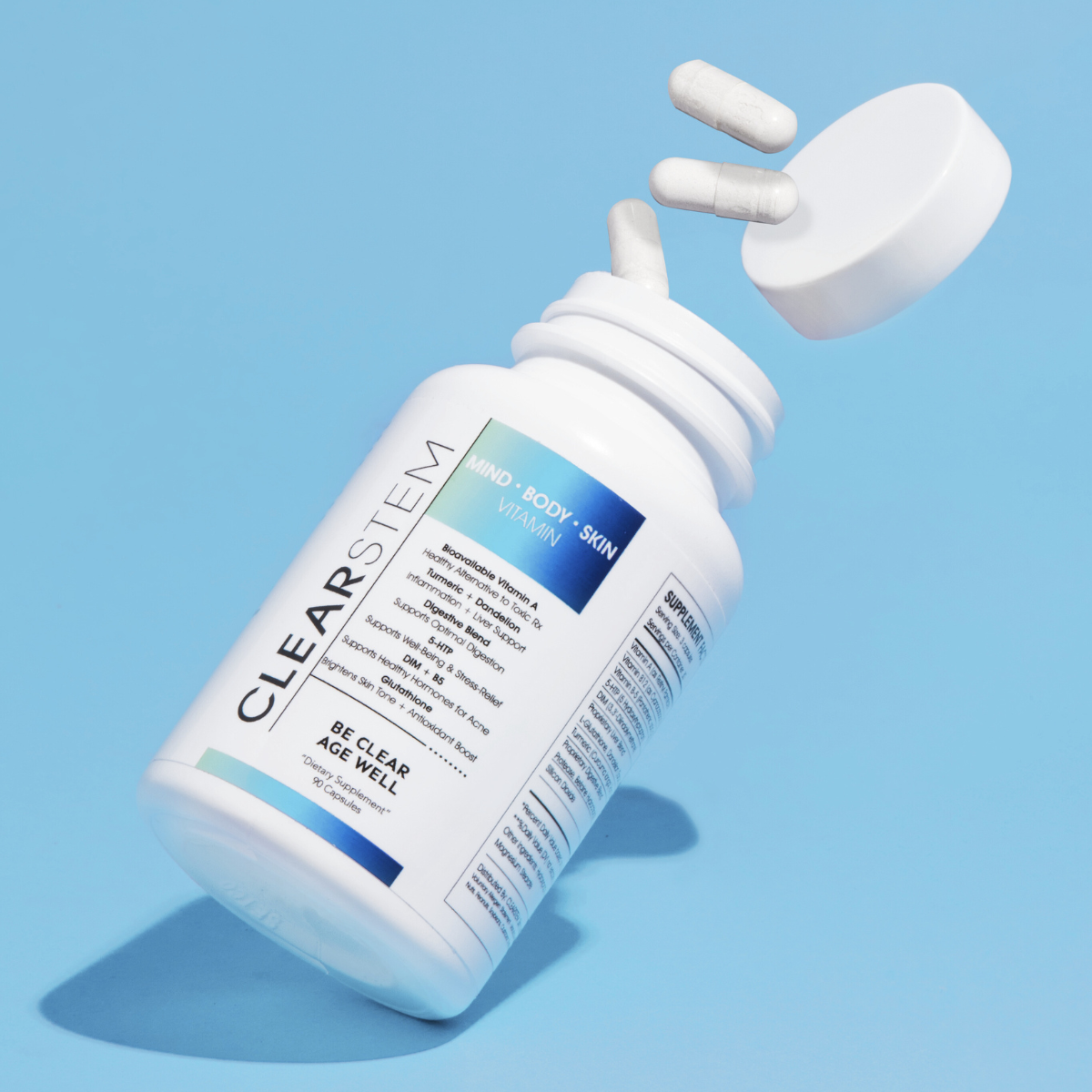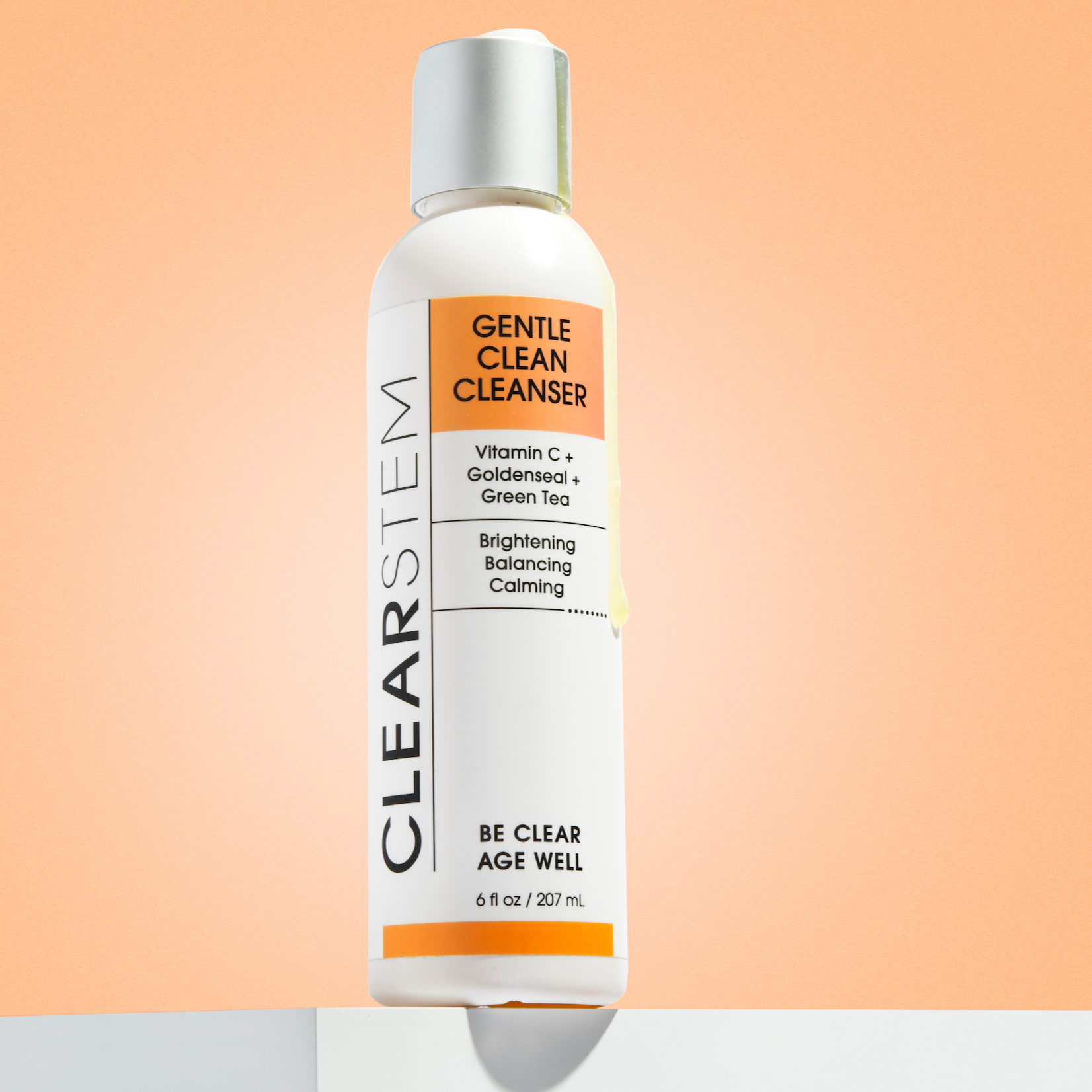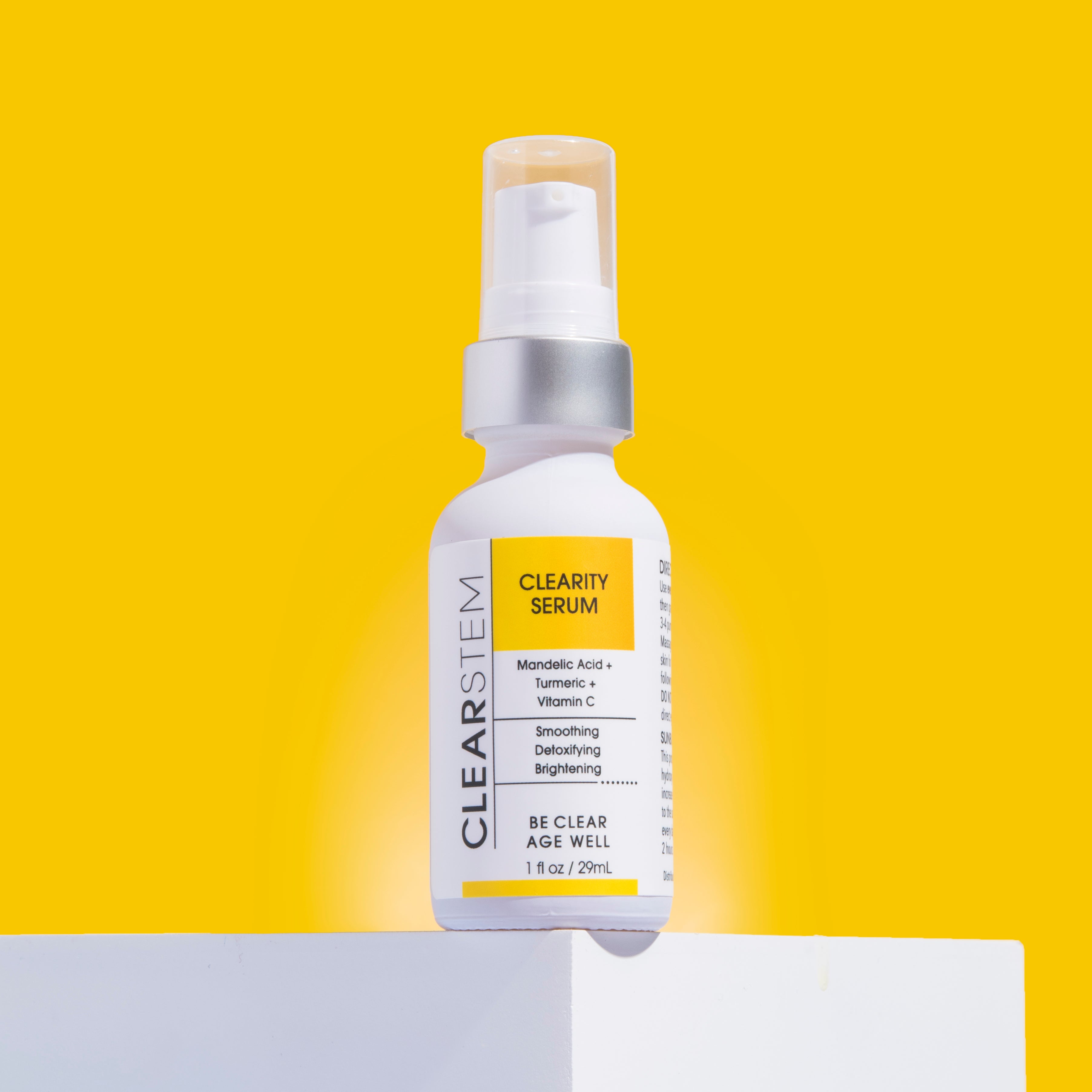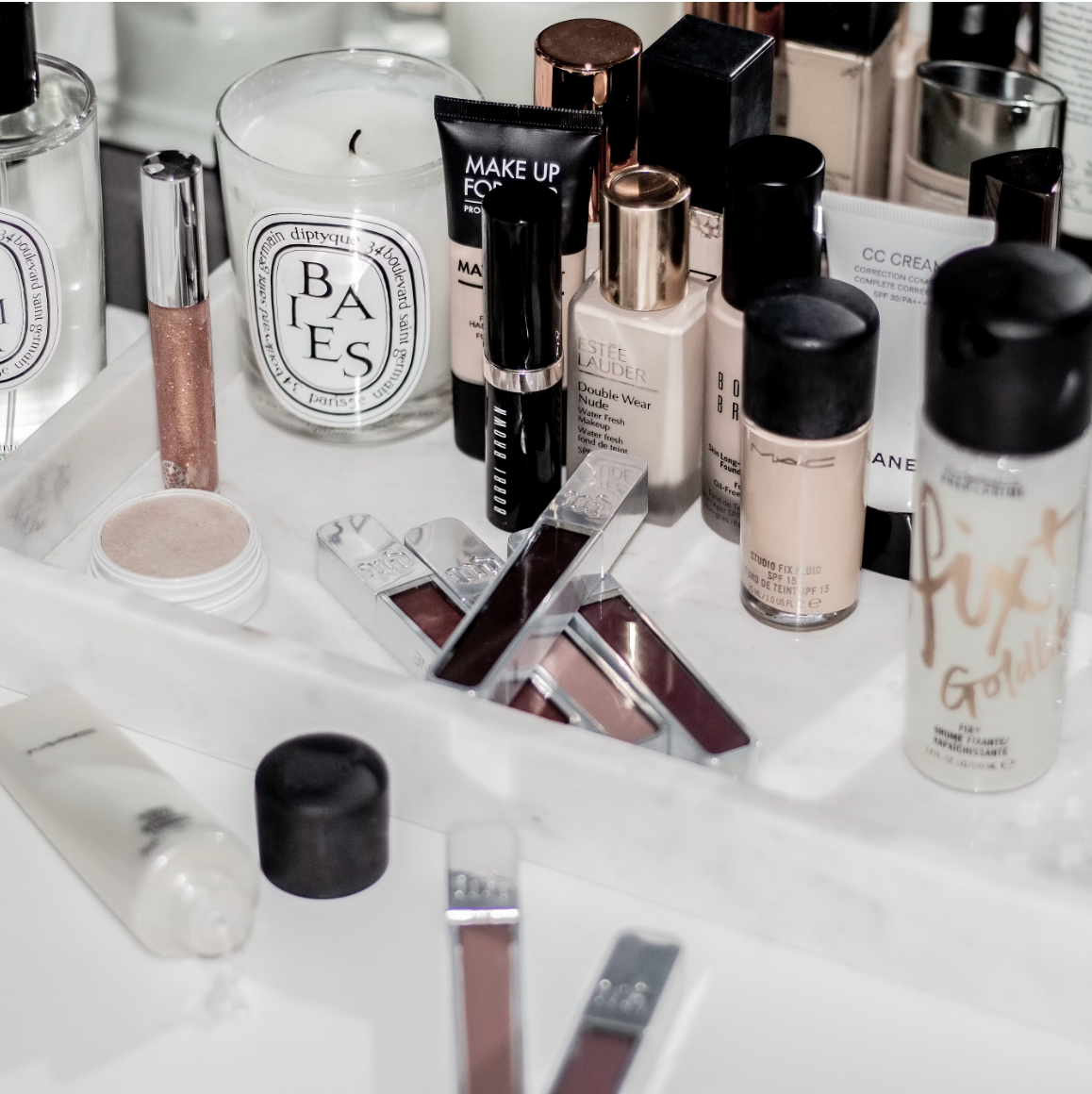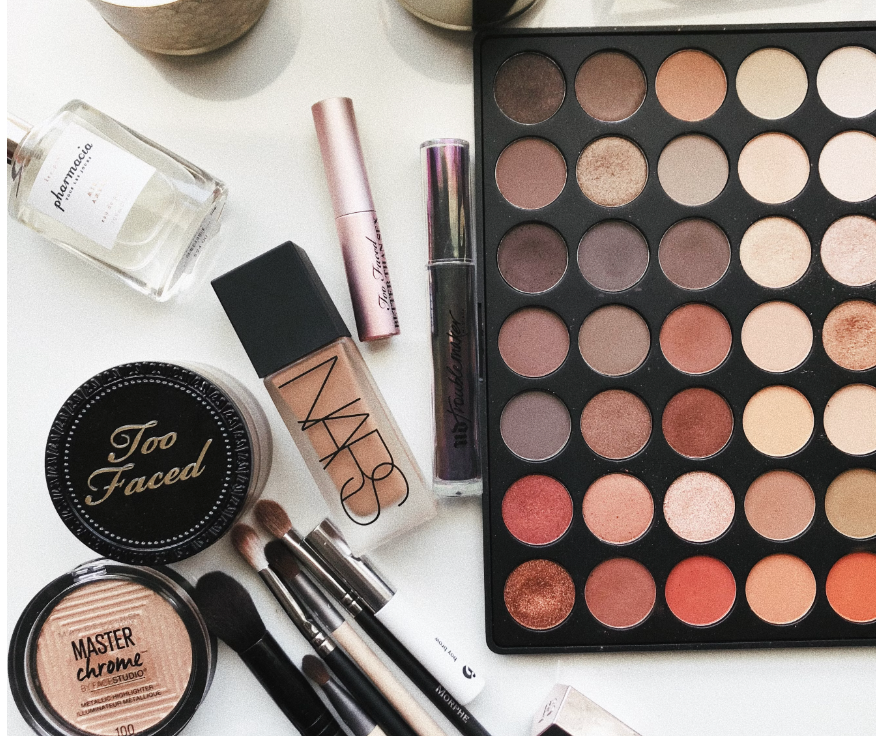Has this happened to you: you fall in love with a new makeup product, incorporate it into your beauty routine, and then boom—your skin breaks out?
Unfortunately, common ingredients in skin care products can cause acne to flare up, whether your skin is acne-prone or not.
But that doesn’t mean you can never wear a smokey eye again. We’re here to explain how to spot acne caused by makeup, what triggers it, and tips for stopping it in its tracks.
Common Types of Acne Caused by Makeup
So, does makeup cause acne? Whether you would like to admit it or not, some of your favorite makeup products may be the source of your acne and skin irritation. Even makeup applicators like brushes and sponges can be the source of your pimple problems.
Acne caused by makeup is common enough to have a fancy scientific name: acne cosmetica, or cosmetic acne. One way for cosmetic acne to occur is by certain makeup ingredients clogging pores, causing an acne breakout.
Another is how an ingredient changes the balance of our skin’s microbiome. Like our stomachs, our skin is home to many microorganisms that keep us healthy and functioning. An imbalance may lead to an overgrowth of acne-causing bacteria called C. acnes.
Cosmetic acne can be tricky to identify because its effects can take a few days to six months to manifest. If you have sensitive skin, it can be extra challenging to identify (is stress causing your acne or is it your new bonzer?).
This delay can lead you into a vicious cycle of breakouts as you attempt to cover new blemishes with acne-causing makeup.
What Acne Cosmetica Looks Like
So, how can you tell if your makeup is causing your breakouts? Acne caused by makeup often appears as small white bumps (sometimes called “grains”). Taking note of where these grains appear can help you pin down the makeup causing the breakout. For example:
- If the acne is around your lip line, it may be a lip balm, gloss, or chapstick
- If the grains are all over your face, it might be a sunscreen, foundation, or moisturizer
3 Common Irritants in Makeup Products
Now that we’ve answered the question, “Can makeup cause acne,” it's time to reveal the underlying triggers. Pore-clogging ingredients are broadly known as “comedogenic.” Here are a few of the top triggers for cosmetic acne:
- Certain oils – Coconut oil and linseed oil are two of the top causes of cosmetic acne due to their high fat content. Brands that advertise “oil-free” products are usually a safer bet.,
- Perfumes– Overly intense fragrance chemicals and Benzoaldehyde can irritate pores. Always opt for natural options when possible.
- Ethylhexyl palmitate – This ingredient is a filler and a moisturizing agent, but it can also clog up pores. It is INCREDIBLY common and needs to be avoided.
- Talc- talc is in a ton of finishing powders and bronzers and can be problematic for those with oilier skin
How to Choose Makeup for Acne-Prone Skin
If pore-clogging ingredients are known as “comedogenic,” then the secret to selecting non-acne-causing makeup is choosing non-comedogenic products.
More products on the market today are touting these benefits right on the front of the label. Look for products that say “non-comedogenic” or “non-pore clogging.” Checking labels may not be the most fun way to shop for makeup, but doing so can save your skin.
Want to double-check with an expert? Use our Pore-Clogging Checker to check your makeup’s ingredient list in seconds.
Non-Comedogenic Makeup Products
One of our favorite cosmetic products to have on hand for sensitive or acne-prone skin is a non-comedogenic setting spray. That’s why we formulated the CLEARSTEM Setting Spray. While not all setting sprays are good for the skin, ours is made with clean and safe ingredients that help to nourish the skin from the inside out.
It bears in mind everything we know about what the skin needs—and what it doesn’t—and bottles it up in a clean, skin-friendly formula.
The Importance of Your Skincare Routine
Thankfully, wearing makeup won’t make existing acne worse. But as mentioned previously, cosmetic acne can cause a vicious cycle of continuous breakouts: you break out from your makeup, which means you reach for more makeup to cover it up, causing more acne, and so on.3
There are a few ways you can minimize the impact of makeup on your skin beyond checking your makeup for known pore-cloggers:
- Go bare – One of the best things you can do for your skin—especially while trying to figure out the product causing your cosmetic acne—is to wear as little makeup as possible or no makeup at all. You look beautiful either way.
- Wash your makeup applicators regularly – Wash and cleanse your makeup brushes at least once a week to keep them free of pesky acne-causing bacteria that might make breakouts worse. Bonus points: clean brushes and applicators help makeup go on more smoothly and evenly.
- Use a light touch – Avoid scrubbing harshly at your skin, whether applying moisturizer or cleansing your face. Roughing up your skin can irritate it and make you more susceptible to a breakout, whereas lightly cleansing and moisturizing tends to the skin barrier without overwhelming it.
- Remove makeup before bed – Use an oil-free makeup remover to wash away your makeup from the day. (And yes, that includes your eyeliner.) Pores that drink up makeup during the night can be left dry or irritated by the time the alarm clock goes off.
Soothe and Solve Makeup-Induced Breakouts with CLEARSTEM
Once you’ve found the makeup or skincare product causing your breakouts, acne cosmetica will usually clear up. To help it along, turn to thoughtfully formulated skincare for acne-prone skin from CLEARSTEM.
Each of our products is carefully crafted with natural ingredients to heal acne at the source—whether it’s acne cosmetica, hormonal acne, or anything in between.
Don’t let breakouts hold you back from your beauty routine. With a little mindful shopping and skincare diligence, you can keep your face looking and feeling radiant—with or without makeup.
Sources:
CLEARSTEM. 7 Ingredients That Cause Breakouts. https://clearstem.com/blogs/skin-care-learning-center/skincare-ingredients-that-cause-acne
acne.org. Can Makeup Cause Acne: What Are the Best Makeup Choices? https://www.acne.org/makeup-acne#WhatAretheBestMakeupChoices
American Academy of Dermatology Association (AAD). I have acne! Is it okay to wear makeup? https://www.aad.org/public/diseases/acne/causes/makeup
acne.org. What is Comedogenicity, And What Ingredients Are Comedogenic? https://www.acne.org/comedogenic-list
CLEARSTEM. How To Tell If Your Makeup Is Breaking You Out. https://clearstem.com/blogs/skin-care-learning-center/how-to-tell-if-your-make-up-is-breaking-you-out
The Mayo Clinic. Acne: Symptoms and Causes. https://www.mayoclinic.org/diseases-conditions/acne/symptoms-causes/syc-20368047
AAD. How to Clean Your Makeup Brushes. https://www.aad.org/public/everyday-care/skin-care-secrets/routine/clean-your-makeup-brushes

